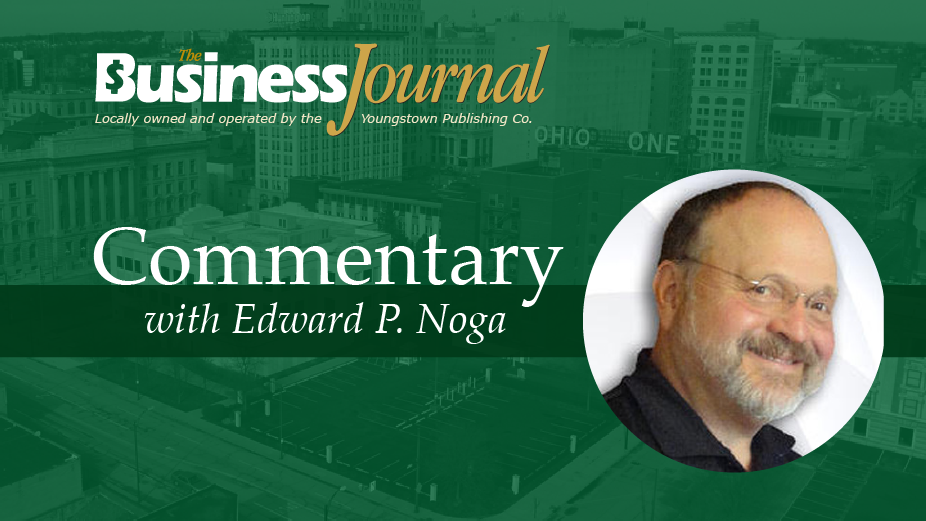By Edward P. Noga
YOUNGSTOWN, Ohio – Just before the 21st century arrived, then-Ohio Gov. Bob Taft proposed a groundbreaking and creative approach to rebuilding many of Ohio’s crumbling public schools.
In the proposal, he mentioned visiting the Youngstown public school system where some of the buildings reminded him of third-world buildings the Peace Corps found in the late 1960s and early ’70s.
The governor’s program asked communities to chip in an amount set by a predetermined community-based formula. He asked interested districts to pass bond issues that would fund the new schools.
For Youngstown, this meant a 4.4-mill levy that would raise 20% of the $183 million needed to build new schools. A massive communitywide effort came about in anticipation of the vote. Community groups, religious congregations and leaders from every aspect of community life came together and went door-to-door to explain the proposal, listen to residents’ concerns and pass out printed materials that outlined this once-in-a-lifetime opportunity.
In 2000, residents said “Yes.” At the time, it was the biggest public works project in the history of the city.
Commentaries before, during and following voter approval praised residents for looking at this monumental commitment to quality of life for the youngest residents. In addition, local leaders reminded everyone that this was a chapter in the history of the
city that would show social responsibility and vision that would benefit both Youngstown and the Valley.
Here we are 20 years later, benefiting from the energy that motivated voters to look beyond their immediate needs and invest in their children’s future. New schools dot the city landscape. Others were infused with dollars to renovate and upgrade buildings and technology.
With all of the efforts to reconfigure the city that John Young founded in 1797, it’s time to remind ourselves and community leaders that shame surrounds many of the closed and unused buildings.
We recently heard the great news that the dams on the Mahoning River will be demolished next year to help reclaim the river that flows through our Valley. Youngstown State University has become an even greater neighbor in its planning and repurposing of dilapidated neighborhoods adjacent to campus. The same can be said for St. Elizabeth Hospital, Stambaugh Auditorium and our downtown library.
Downtown is an ever-changing maze of construction crews who are rebuilding the city core.
Proposals and plans to reclaim vacant land in the neighborhoods by planting low-maintenance greenery have piqued interest. The local land bank sees this as an alternative to vacant land becoming fields of high grass that invite illegal dumping.
Some vacant and unused school buildings in the city were rented or sold in the early years following the period of new construction. Sadly, it seems most of these efforts resulted in failed proposals.
Driving through the city and passing these mammoth vacant buildings does little to project a city trying to regroup and move forward.
The task may seem daunting. But there are those who see such challenges as opportunities for energy that tell the community, “We can take care of this issue.”
The problem is complex but we all know we have many solvers of complex problems. Recently, I was told that the city school system has 14 buildings in use. Four vacant buildings go unused and one has been modified for storage.
There are the vacant buildings that were purchased early on with substantial plans to retrofit and repurpose. Sadly, many of these projects materialized but were eventually found to be unsustainable.
There is the historic nature of some of the buildings, which might be used in a historical fashion. This, however, usually involves massive community planning and partners. Dollars involved in such efforts often supersede the potential benefits. And then there are the buildings the school district sold and the new owners resold. There might be some out there where the owners are unknown.
As we move forward with river reclamation, new business and job growth, empowering neighborhood groups and block watches, and as we see vacant land becoming vegetable and flower gardens, and relish enjoying Mill Creek Park and other Valley areas of recreation, there is no doubt that many projects have happened and will happen because of new energy.
For sure, various agendas are in progress as we move forward.
Hopefully, the energy that has already accomplished much will include the energy and agendas that look to deal and work with these unused buildings. Their continuing presence does not speak well of our efforts to recreate our community.
Many thanks to Gov. Taft. We’re still at bat.
